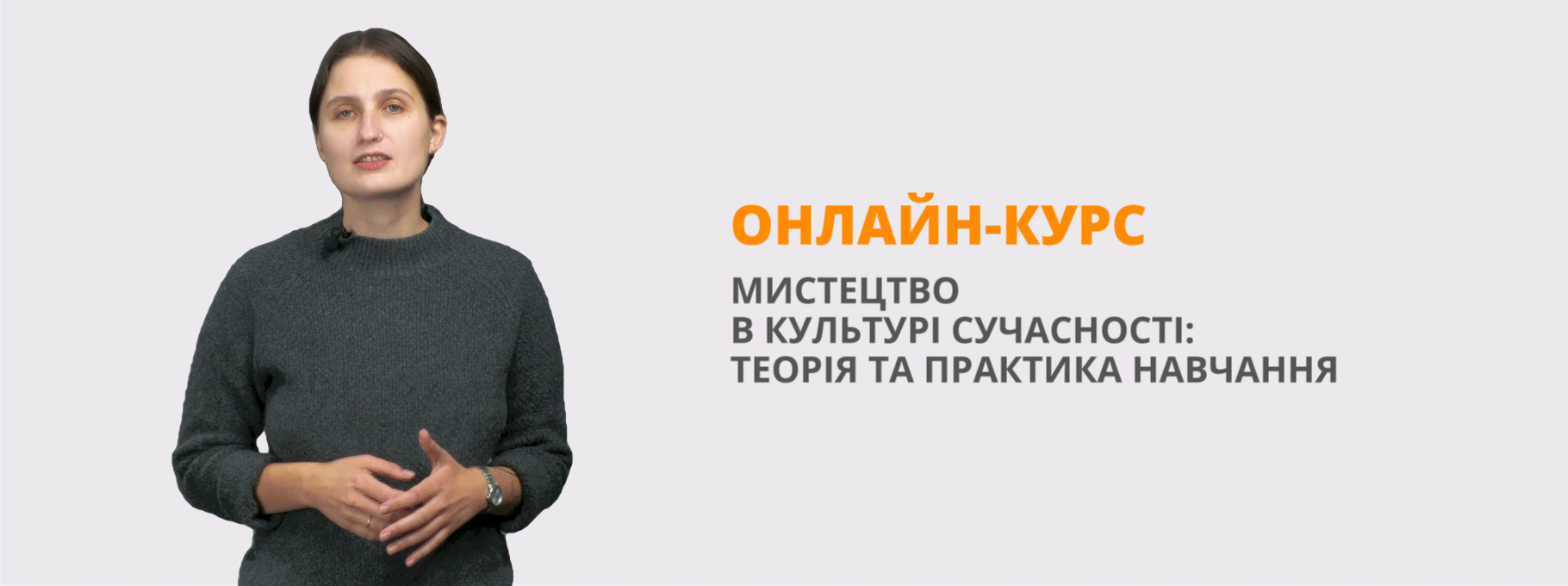Урок "Формування професійної комунікативної компетентності на заняттях англійської мови. ARISTIC EMBROIDERY"
Формування професійної комунікативної компетентності
на заняттях англійської мови
на тему:


Викладач: Никифорак Н.Я
UNITE. ARISTIC EMBROIDERY
 Topic/Тема заняття: “Embroidery: cultural heritage of Ukraine ”.
Topic/Тема заняття: “Embroidery: cultural heritage of Ukraine ”.
Цілі :
Навчальна:
засвоїти особливості традиційної вишивки, регіональні та локальні характеристики;
навчати використовувати вивчені лексичні одиниці та граматичні структури в різних видах мовленнєвої діяльності та відповідно до мовленнєвої ситуації;
активізувати вживання нової лексики в усному та писемному мовленні;
розширити знання студентів про історію розвитку вишивки, різних видів;
збагачувати словниковий запас студентів по даній темі;
вдосконалювати навички читання й усного мовлення;
практикувати використання засвоєного лексичного матеріалу в обговоренні проблемних питань;
формувати навчальні уміння та навички для наступного самонавчання та творчої діяльності;
Розвиваюча:
розвивати пізнавальні та творчі здібності студентів через нестандартні форми подання інформації;
розвивати уміння встановлювати причиново-наслідкові зв’язки і здатність висловлювати своє ставлення до теми;
розвивати культуру спілкування, мовну та мовленнєву реакцію студентів;
вміння надавати інформацію та висловлювати власні думки і припущення;
розвивати шанобливе ставлення до надбань української культури та вишивки зокрема;
розвивати в студентів увагу, кмітливість, образне мислення, мовну здогадку та комунікативні навички.
розвивати види пам’яті (слухової, зорової, логічної, асоціативної, емоційної та ін).
Виховна:
виховувати в студентів бережне ставлення до український вишиванки, глибоке розуміння та любов до регіональних, національних традицій;
засади духовності, моралі, поведінки, гідні ідеалам молодих митців;
виховувати самостійність, зацікавленість у вивченні іноземної мови, чіткість висловлення думки.
Методична мета заняття: моніторинг результатів впровадження елементів продуктивної технології навчання як засіб розвитку мовної компетентності студентів.
Тип уроку: формування знань, вмінь та навичок учнів.
Вид уроку: навчально-практичне заняття.
Метод проведення:
- розповідь;
- бесіда;
- пояснювально-ілюстративний;
Час проведення: 80 хвилин.
Оцінювання:
проводиться по накопичувальній системі в декілька етапів з переводом у 12 бальну шкалу оцінювання.
Міжпредметні зв’язки : українська мова, етнографія, історія та теорія орнаменту, історія мистецтв, культурологія, робота в матеріалі, композиція, технологія, історія гуцульського народного мистецтва.
Методичне забезпечення: словники, зошити, картки із завданнями, текст «Ukrainian Embroidery», роздатковий матеріал, презентація.
Література:
1. Сусак К. Р. Українське народне вишивання: Навч. посібник/К.Р. Сусак, Н.А. Стеф’юк. – К.: Наук. світ, 2006. – 281с.
Очікувані результати:
Студенти повинні знати:
- новий лексичний матеріал;
- історію, основні види вишивки, орнаменти, кольористику різних регіонів України;
Студенти повинні вміти:
- вживати новий лексичний матеріал в усному та писемному мовленні;
- максимально розуміти всю інформацію, що міститься в текстах;
- висловлювати власні думки і припущення;
- запитувати, здобувати та надавати інформацію.
ОГЛЯД ЗАНЯТТЯ:
Заняття проходить на основі формування знань, вмінь та новичок студентів щодо даної теми. Під час заняття студенти знайомляться і вивчають основний лексичний матеріал по темі вишивка. Актуалізація опорних знань студентів проводиться методом тестування (лексичні вправи, які базуються на текстах для читання та аудіювання), що дозволяє за короткий проміжок часу об’єктивно оцінити знання та розуміння всієї інформації, що міститься в тексті, згідно з результатами тестування провести оцінювання.
Заняття проводиться у формі бесіди, пояснення з обов’язковою демонстрацією навчального матеріалу на екрані за допомогою ІКТ. Під час викладу матеріалу використовується візуалізація навчального матеріалу за допомогою презентації. Студенти користуються роздатковими матеріалом, опорними конспектами.
Закріплення вивченого матеріалу проводиться у різних формах: у формі виконання лексичних завдань, розроблених у вигляді мультимедійної презентації, у формі аудіювання та ін..
Після виставлення оцінок та підведення підсумків заняття, студенти діляться своїми враженнями про їхню роботу на занятті.

ХІД ЗАНЯТТЯ
Introduction
І. Підготовка до сприйняття іноземного мовлення.
1. Greeting. Привітання. Організація групи до заняття.
Teacher: Good afternoon dear students and guests. I’m glad to see you. How are you today? Who is absent today?
2. Presentation of the topic and task. Повідомлення теми та мети
Т: Folk art has been perfected through the centuries. Ukrainian folk decorative art came mainly from the peasantry. Present-day folk decorative art occupies an important place in social life.
Artistic embroidery is a priority during the revival and development of traditions of Ukrainian people. It is both an ancient and modern art. It’s visiting card of our folk in the synthesis with other kinds of decorative and applied arts, as well, as a part of Ukrainian folk tradition, the national and cultural image of which is a unique phenomenon of the world civilization, according to M. Zhulynskiy’s words.
So the topic of our today's lesson is "Embroidery: cultural heritage of Ukraine".
Thus our aims are:
to know the meaning of the words “to embroider”, “embroidery” and “ fancy-work”
to read the text “Ukrainian embroidery” and get more information about it development;
to recognize and understand new words and word combinations in the text;
to read and understand the subject and details of today`s topic;
to participate in common conversational exchanges about the topic of today's lesson;
- Student’s goals at the lesson are:
Teacher: Your tasks at the lesson are:
- to show your knowledge of the vocabulary and grammar on the topic;
- to develop speaking, reading, listening skills;
- to listen attentively and try to understand everything;
- to speak English as much as possible;
- not to be afraid to make mistakes;
- to express your opinion and defend it;
4. Expecting results.
Teacher: Each lesson you are supposed to get some knowledge. I want you to complete these sentences.
Expecting results:
- I’d like to develop…….
- I want to improve……..
- I’d like to find out about…..
- I want to know more about….
Warm-up. Уведення в іншомовну атмосферу.
Мета: розвиток мовленнєвих здібностей.
Discussion on proverbs ( слайд )
T:Tell me what proverbs about the embroidery do you remember?
Look at the computer screen. Read these proverbs aloud. Do you understand their meaning. Find out the Ukrainian equivalent to them.
(Студентам пропонують прислів’я по темі, їм потрібно знайти український еквівалент)
- To look for a needle in a bund of hay. (Шукати голку в копиці сіна)
- To hang by a thread. (Висіти на ниточці)
- To wash one’s dirty linen in public. (Виносити сміття з хати)
- The heavens spangled with star. (Небо усіяне зірками)
Match the words with their definitions
T: Hand embroidery demands some specific materials and tools for embroidery …(fabric, needles for threads and beads, scissors, thimbles, tambours, frame, spindle is used in gold embroidery, awl is used in gold embroidery, vykolka, loom for weave with beads, measuring band and box for needlework.
Мета:
Your task is to match the words with their definitions.
|
1. |
|
… a pointed slender piece of metal with a hole in it through which thread is passed for sewing. |
Scissors |
|
2. |
|
… any cloth made for yarn or fibres by weaving, knitting, felting; a texture of cloth. |
Thread |
|
3. |
|
…a fine cord of twisted filaments, esp. of cotton used in sewing |
Needle |
|
4. |
|
… a cutting instrument used for cloth, hair, etc. having two cross pivoted blades that cut by shearing action. |
Workbasket |
|
5. |
|
…a container for implements, tools or materials, esp. sewing equipment. |
Fabric |
Keys: 1- needle, 2-fabric, 3- thread, 4- scissors, 5- workbasket.
T.: Artistic needlework is an inseparable part of decorative and applied arts. It is one of the constructive branches of Ukrainian national spiritual life, its moral, ethnic and material culture.
Ukrainian dictionaries explain the meaning of the word “to embroider” with the help of the following definitions:
to embroider – means to decorate, embellish clothes and cloths of interior and ceremonial use;
to embroider – means to create fancy-work either on the material or leather by laying stitches with the help of a thread and needle;
fancy-work – is a technologic process which involves laying stitch, drawing and fastening the working thread or other material on the fabric or leather to be embroidered.
Main part of the lesson
IІ. Основна частина заняття.
1. Theme introduction.
T.: Embroidery is the ornamentation of textile with decorative stitchery. Now look at the computer screen, here you see the embroidery stitches including the basic stitches that every beginner of embroidery should learn, as well as variations of some well-known embroidery stitches and stitches for a wide range of embroidery typesю.
- Reading
Pre-Reading conversation.
Мета: формування навичок вимови, вдосконалення навичок читання тексту з метою отримання загального уявлення (skimming), максимально повного й точного розуміння всієї інформації, що міститься в тексті (scanning) та розвитку вміння знаходити потрібну інформацію.
Teacher: Ukrainian embroidery occupies an important place among the various branches of Ukrainian decorative arts. Embroidery has a rich history in Ukraine, and has long appeared in Ukrainian folk dress as well as played a part in traditional Ukrainian weddings and other celebrations. Appearing all across the country, Ukrainian embroidery varies depending on the region of origin. From Poltava, Kiev, and Chernihiv in the east, to Volyn and Polissia in the northwest, to Bukovyna, and the Hutsul area in the southwest, the design patterns have a long history which defines their ornamental motifs and compositions, as well as their favorite choice of colors and types of stitches.
Now we are going to read the the text about “Ukrainian Embroidery” and find out more information about it. Before reading mind some new vocabulary:
WORD FILE
|
embroidery [im′brɔideri] - вишивка; ancient [′einʃənt] - стародавній favourate [′feivərit] - любимий, улюблений; to assume [ə′sju:m] - набувати technique of execution [tek′ni:k ,eksi′kju:ʃn]-манера (техніка) виконання prevalent [′prevələnt] - поширений; перевачіаючий floral pattern [flɔ:rəlˏ pжtn] - рослинний узор cluster of grapes[′klʌstəˏgreips] - гроно винограду to execute [′eksikju:t]- виконувати by means of [mi:n]- за допомогою back-stitch [bækstiʧ] - вишивання "низзю" cross-stitch [krɒsstiʧ] - вишивання хрестиками open work[əʋpən′wɜ:k] - прорізна або ажурна гладь; мережка intersperse [intə:′spə:st] - пересипати; різноманітним lace-work [leiswɜ:k] - техніка "виколювання" punch work [pʌʧwɜ:k] - техніка "мережки" false lace-work [fɔ:lsˏleiswɜ:k] - техніка "фальшивого вирізування" raised embroidery [reiz] - вишивання "качалочками" to produce an impression [prə′dju:sˏ im′preʃ(ə)n] - створити враження curtain [′kɜ:tn] - завіса; занавіска table-cloth [teibleˏklɒƟ] - скатертина, салфетка set [set] - набір, комплект napkin [′næpkin] - серветка, салфетка evidence [′evid(ə)ns] - очевидність; доказ enrichment [in′riʧment] - збагачення; поповнений to retain [ri′tein] - збepiгaти satin-stitch [′sætinstiʧ] - гладь (про вишивку); convincingly [kənvinsiŋli] - переконливо heritage[′heritiʤ] - спадщина. |
While-Reading activities:
Teacher: Read the text and match the heading to its every part.
A. Assumed a variety of artistic features
B. The morden art of embroidery has become very popular with the people
C. From the earliest times the embroideries of every region of Ukraine have their distinctive elements
UKRAINIAN EMBROIDERY
1.______________
Embroidery has from ancient times been a favourite way of artistic decoration of various household goods in the Ukraine.
In the course of centuries the vividly expressive national style of artistic embroidery developed its definite forms and assumed a variety of artistic features (favourite colours, technique of execution, definite ornamental elements, patterns and compositions) in different regions and districts of Ukraine.
2.______________
In Kyiv Region the prevalent ornament was a floral pattern with clusters of grapes, berries and small flowers, red and black colouring, executed by means of back-stitch, satin- stitch, cross-stitch and other techniques.
The satin-stitch, open-work, false lace-work are typical of Chernigiv Region embroidery. The typical colours are white interspersed with little red, black or black and red. The floral ornament of the Chernigiv embroideries is frequentlу combined with geometrical figures.
The Poltava delicate and light-coloured or white flora Ukrainian needle-women use over a hundred varieties of stitches in embroidering the towels, shirts, tablecloths, and bedspreads for which Ukraine іs famous. The designs include geometric ornaments, plant motifs interspersed with bird and animal images or a female figure. Besides certain common features, the embroideries of every region of Ukraine have their distinctive elements.
Embroidery has been practiced on a large scale in the Ukraine from the earliest times.
Geometrized embroideries, executed by means of satin-stitch, open-work, lace-work or punch work, contrast with the colourful Podilian raised embroideries and black-and-red back-stitch techniques.
A profound impression is produced by the bright, multi-coloured and varied embroidery, mostly in geometrical patterns of the Gutsul and Transcarpathian artists.
3._____________
The modern art embroidery - children's clothes, fancy women's blouses, stylish dresses, men's shirts of various fashions, curtains, table-cloths, sets for the decoration of aparments, napkins, souvenirs, etc. - is evidence of a considerable enrichment of the assortment of folk art embroidery and of the fact that the art of embroidery finds wide application even now.
The art of embroidery of our times shows that embroidery is becoming more laconic, retaining its beauty at the same time.
The works convincingly illustrate the fact that modern art embroidery has become very popular with the people, that its rich artistic heritage furthers the development of national embroidery.
After – Reading Activity.
Teacher: Answer the questions:
- What has been a favorite way of artistic decoration ancient time ?
- What style has the art of embroidery developed in the course of centuries?
- How can you describe Kyiv region ornaments and colors?
- Compere the typical embroidery of Chernigiv & Poltava regions.
- What for do you use embroidery?
- Grammar Revision.
Teacher:


5. Listening comprehension.
Мета: розвиток навичок сприйняття на слух.
Pre-listening:
Teacher: Before listening mind some unknown words.
WORD FILE
stitchery [stiʧəri] - стібок
needle [ni:dl] - голка
thread [θred] - нитка
linen [linin] - лляний, льняний
velvet [velvit] - оксамит, бархат
leather [′le Ɵə] -шкіра
muslin [mʌzlin] - муслін
cord [kɔ:d] – шнур
fringe [frinʒ] - бахрома
bead [bi:d] - намистина, бісер
sequin [si:kwin] - блискітка на плаття
spangle [′spæŋgl] - блискітка, блищики;
pearl [pɜ:l] - перлина, перли;
precious stone [′preʃəˏstoʋn] – коштовне каміння
taut [tɔ:t] - туго натягнутий
outline [aut′lain] -обрис, контур
needelace [′ni:dlleis] – мережево, в’язане гачком
needlework [′ni:dlwɜ:k] – шиття, вишивання
needwoman [′ni:dlˏwʋmən] – швачка
EMBROIDERY
Embroidery is the ornamentation of taxtiles with decorative stitchery. This is done by a needle of suitable size and thickness and threaded with silk, cotton, wool or other thread. The ornamentation may be guided by the eye; it may be done on drawn threads or on marked patterns and on a suitable material. Designs may be embroidered by means of counted threads or by checked paper.
Many kinds of material have been used as the ground. Among those used the most often are linen, velvet, leather, muslin and silk.
Materials of man-made fibre are also used.The threads used for the stitchery are also very various and the part of the embroider's skill consists in the exploitation of different textures and thicknesses of thread.
Gold and silver thread was used extensively in old and precious embroidery.
Other objects which have been used as applied decoration are cords and fringes, beads, sequins, spangles and paillettes, pearls and other precious stones. Feathers have played a role of major importance in certain styles of Oriental and Pre-Columbian American embroidery. Coins and small metallic ornaments have been used, too.
Needles are used to carry the thread and work the stitches. In different ages needles were bone and gold, bronze and wooden. Modern needles are of steel. Embroidery needles are designed according to their function, varying in thickness and length, size of eye and type of point.
Frames were used to secure the fabric and keep the material taut for working and for tracing the outline of the design on it.
Before working the design is transfered to the material.
Machine embroidery has increased in scope and popularity since it was introduced during the Industrial Revolution. Perhaps the earliest embroidery machine was that exhibited at the French Industrial Exhibition in 1854 by M.Hellman.
After-listening task:
- Teacher: Put the events in the logical order.
- Among those used the most often are linen, velvet, leather, muslin and silk.
- Machine embroidery has increased in scope and popularity since it was introduced during the Industrial Revolution.
- Embroidery is the ornamentation of taxtiles with decorative stitchery.
- Gold and silver thread was used extensively in old and precious embroidery.
- In different ages needles were bone and gold, bronze and wooden.
- Perhaps the earliest embroidery machine was that exhibited at the French Industrial Exhibition in 1854 by M.Hellman.
- Modern needles are of steel.
|
1. |
|
|
2. |
|
|
3. |
|
|
4. |
|
|
5. |
|
|
6. |
|
|
7. |
|
- Vocabulary practice.
Мета: активізація лексичних одиниць по темі.
- Teacher: Read aloud and give the Ukrainian equivalents of the words and word combinations.
(a) to assume, to illustrate, colouring, back-stitch, cross- stitch, curtain, apartment, evidence, expressive, light- coloured, multicoloured, vividly;
(b) ancient times, artistic decoration, household goods, prevalent ornament, typical colours, geometrical figures, profound impression, stylish dress, considerable enrichment, at the same time, by means of.
- Teacher: Read aload and give the English equivalents of the words and word combinations.
Вишивка, техніка виконання, узор, рослинний орнамент, виконувати, гладь,
техніка "виколювання", різноманітні фасони, скатертина, використання, спадщина.
III. Заключна частина заняття. Summing up the lesson
- Making conclusion and giving marks. Підбиття підсумків.
T: Embroidery is a valuable historical artistic source, which enable one to realize more profoundly the question of material and spiritual culture of Ukrainian nation. This is the nation wide art, which retained and preserved trough the centuries collective artistic memory and aesthetic ideals of beauty. The use of the art of embroidery itself with its ornamental symbols, semantics, original synthesis of techniques of artistic needlework, which in fact accumulate symbols of nature, is the way to the national spiritual self-preservation.
Our lesson is coming to the end. We have done all the tasks of our lesson.
Could you summarize what we have done during the lesson?
Look at the blackboard and say: have we achieved all of our goals? What are they?
As for me, I think our lesson was very interesting with your help. You have worked today greatly. We have done lots of things at the lesson.
To sum up say what you like best in our lesson.
Take a microphone. Say some words and pass it to your friend.
S2.
Teacher: Thank you and your marks today are…
- Giving home task. Повідомлення домашнього завдання.
Find out the information about Hutsul embroidery (the characteristic feature of Hutsul embroidery, technique of Hutsul embroidery, Hutsul embroidery ornaments, technology of Hutsul embroidery).
- Saying goodbye. Закінчення заняття
Teacher: And now the lesson comes to the end and it’s time to say
goodbye.

про публікацію авторської розробки
Додати розробку
